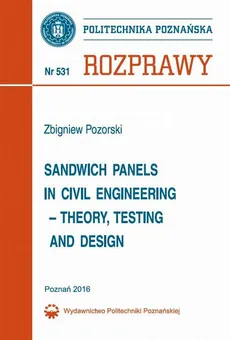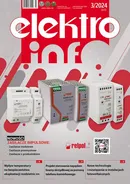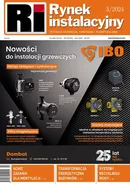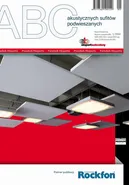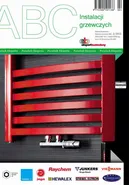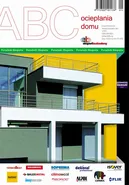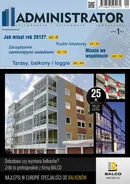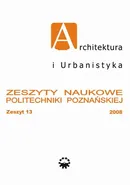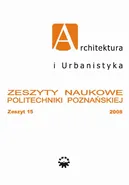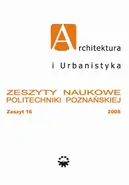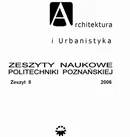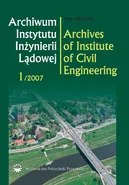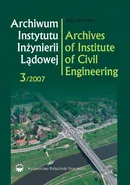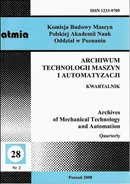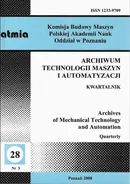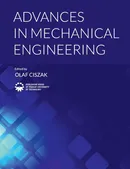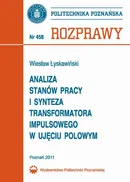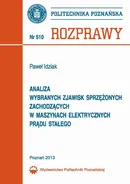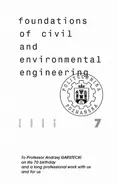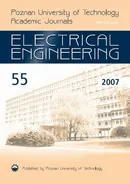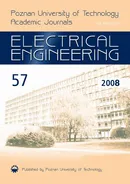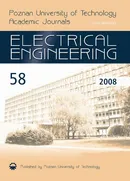Sandwich panels in civil engineering-theory, testing and design
Currently, it is difficult to imagine civil engineering, particularly industrial engineering, without sandwich panels. These panels are mainly used as building envelope (walls, roofs), partition walls and suspended ceilings. The market of sandwich panels is constantly changing. Definitely the most commonly used sandwich cores are now PU-cores: polyurethane (PUR) and polyisocyanurate (PIR). In the case of high fire-protection requirements mineral wool is applied. Expanded polystyrene (EPS) is used less frequently. It is estimated that sales of sandwich panels in the EAME region (Europe, Africa and Middle East) in 2005 reached 150 million square meters, whereas in 2010 sales reached nearly 300 million. The number of new producers and the sales volume is still increasing. The main advantages of sandwich panels are their lightweight construction, excellent thermal insulation and very fast process of production and assembly. The time of realization of the investment is very short. Manufacturers who produce sandwich panels serve their parameters in accompanying information. Based on this information, the designers choose panels satisfying ultimate and serviceability limit states. The executor attaches panels to the substructure. For those who do not come close to this industry, the whole process looks banal. In fact, at every stage of this process, there are a number of difficulties. The production process is complex. Most often it is carried out on a continuous production ine. The final quality of the product is affected by many factors including the fact that it is often difficult to execute precise production monitoring. One of the most difficult challenges is to synchronize the appropriate mechanical and chemical processes. Huge chemical companies work on the development of chemical compounds used during manufacturing to produce the core of sandwich. The use of such a mass product as sandwich panel requires appropriate testing and design procedures. Manufactured panels should be tested to determine necessary technical parameters. Over the past few decades, testing procedures have changed, but they are still not perfect. Some of the carried out tests give erroneous results. The Manufacturer and Designer are often unaware of these errors. 6 Preface It is similar in design. It is widely believed that the principles of mechanics of sandwich panels are very well known and established, but this is not true. A widely used theory (briefly presented in Chapter 2) had its origins in the 50s of the twentieth century, which is only about 70 years ago. Since that time there have been many scientific studies on sandwich structures. New theories are presented, new methods of analysis are developed and new tools are used. The design of sandwich panels is very complex. There are many failure mechanisms of structures with soft core. There are often local phenomena that depend on the cooperation between the different layers of the panel. In designing this type of systems, creep of core material should be taken into account. The influence of thermal actions that are usually neglected in other types of construction is very important. The core of the sandwich has a finite stiffness, and thus always affects the structural behavior. All these aspects make the results of the analysis of sandwich panels potentially surprising to everyone, even the most experienced engineer. More advanced studies show that the application of the generally accepted theory sometimes leads to wrong conclusions. All issues discussed in the book concern the panels with a soft core. Such structures are widely used not only in civil engineering but also (and perhaps above all) in the space industry, aerospace, shipbuilding and automotive industries. This book is addressed to manufacturers, laboratory technicians, designers and researchers who are interested in the problem of mechanics of sandwich structures. This is an attempt to approach the world of theory and practice. The first chapter discusses the structure of layered elements and their most important features. It also presents a review of the literature focusing on computational models, failure mechanisms and testing methods. Particular attention was paid to the beginnings and dissemination of the Ordinary Sandwich Panel Theory. The assumptions and basic equations of the OSAPT are presented in Chapter 2. Chapter 3 shows various aspects of the structural behavior of sandwich systems. Phenomena are discussed by examples. Chapter 4 focuses on suport conditions, considering elastic supports and the impact of restrictions on deformation in the plane of the panel. The entire Chapter 5 is devoted to the basic failure mechanism, which consists in the local instability of a compressed sandwich face. Chapter 6 deals with some aspects of testing for material parameters. The intention of the author was to take a broader look at the phenomena, find their explanation and determine their practical importance for the safety of sandwich structures. The book reflects the author's research results. The manufacturers and users of sandwich panels often inspired these studies
- Kategorie:
- Język wydania: angielski
- ISSN: 0551-6528
- Liczba stron: 175
-
Sposób dostarczenia produktu elektronicznegoProdukty elektroniczne takie jak Ebooki czy Audiobooki są udostępniane online po opłaceniu zamówienia kartą lub przelewem na stronie Twoje konto > Biblioteka.Pliki można pobrać zazwyczaj w ciągu kilku-kilkunastu minut po uzyskaniu poprawnej autoryzacji płatności, choć w przypadku niektórych publikacji elektronicznych czas oczekiwania może być nieco dłuższy.Sprzedaż terytorialna towarów elektronicznych jest regulowana wyłącznie ograniczeniami terytorialnymi licencji konkretnych produktów.
-
Ważne informacje techniczneMinimalne wymagania sprzętowe:procesor: architektura x86 1GHz lub odpowiedniki w pozostałych architekturachPamięć operacyjna: 512MBMonitor i karta graficzna: zgodny ze standardem XGA, minimalna rozdzielczość 1024x768 16bitDysk twardy: dowolny obsługujący system operacyjny z minimalnie 100MB wolnego miejscaMysz lub inny manipulator + klawiaturaKarta sieciowa/modem: umożliwiająca dostęp do sieci Internet z prędkością 512kb/sMinimalne wymagania oprogramowania:System Operacyjny: System MS Windows 95 i wyżej, Linux z X.ORG, MacOS 9 lub wyżej, najnowsze systemy mobilne: Android, iPhone, SymbianOS, Windows MobilePrzeglądarka internetowa: Internet Explorer 7 lub wyżej, Opera 9 i wyżej, FireFox 2 i wyżej, Chrome 1.0 i wyżej, Safari 5Przeglądarka z obsługą ciasteczek i włączoną obsługą JavaScriptZalecany plugin Flash Player w wersji 10.0 lub wyżej.Informacja o formatach plików:
- PDF - format polecany do czytania na laptopach oraz komputerach stacjonarnych.
- EPUB - format pliku, który umożliwia czytanie książek elektronicznych na urządzeniach z mniejszymi ekranami (np. e-czytnik lub smartfon), dając możliwość dopasowania tekstu do wielkości urządzenia i preferencji użytkownika.
- MOBI - format zapisu firmy Mobipocket, który można pobrać na dowolne urządzenie elektroniczne (np.e-czytnik Kindle) z zainstalowanym programem (np. MobiPocket Reader) pozwalającym czytać pliki MOBI.
- Audiobooki w formacie MP3 - format pliku, przeznaczony do odsłuchu nagrań audio.
Rodzaje zabezpieczeń plików:- Watermark - (znak wodny) to zaszyfrowana informacja o użytkowniku, który zakupił produkt. Dzięki temu łatwo jest zidentyfikować użytkownika, który rozpowszechnił produkt w sposób niezgodny z prawem. Ten rodzaj zabezpieczenia jest zdecydowanie bardziej przyjazny dla użytkownika, ponieważ aby otworzyć książkę zabezpieczoną Watermarkiem nie jest potrzebne konto Adobe ID oraz autoryzacja urządzenia.
- Brak zabezpieczenia - część oferowanych w naszym sklepie plików nie posiada zabezpieczeń. Zazwyczaj tego typu pliki można pobierać ograniczoną ilość razy, określaną przez dostawcę publikacji elektronicznych. W przypadku zbyt dużej ilości pobrań plików na stronie WWW pojawia się stosowny komunikat.
Preface 5 Symbols and abbreviations 7 1. Introduction 11 1.1. Structural sandwich 11 1.2. The sandwich effect 13 1.3. Brief review of the literature 14 2. Theoretical background of the OSAPT 23 2.1. Assumptions 23 2.2. Basic equations 26 2.3. The influence of thermal actions 33 2.4. Basis of structural design 34 3. Structural behavior 37 3.1. The effect of shear deformation 37 3.2. Multi-span panels with flat and thin faces 40 3.2.1. Structures subjected to transverse load 40 3.2.2. Structures subjected to thermal actions 42 3.3. Sandwich panels with thick or deep-profiled faces 47 3.3.1. Basic equations 47 3.3.2. One-span beam 50 3.3.3. Parametric studies of two-span beam 58 3.3.4. Numerical verification of sandwich structure behavior 63 3.3.5 Boundary conditions 67 3.3.6 Explanations 68 3.4. Concluding remarks 74 4. Support conditions 75 4.1. Elastic supports 75 4.1.1. Formulation of the problem 75 4.1.2. Action of transverse load q 77 4.1.3. Action of temperature gradient ?T 79 4.2. Limitation of in-plane expansion 80 4.2.1. Formulation of the problem 80 4.2.2. Solution of the problem 81 4.2.3. Elementary examples 84 4.2.4. The effects of restrictions on freedom of in-plane deformation 86 4.2.5. Two-span beam with confined horizontal displacements 91 4.3. Concluding remarks 94 5. Wrinkling 95 5.1. Theoretical approaches 95 5.1.1. Energy Method – linear decay function 95 5.1.2. Energy Method – exponential decay function 97 5.1.3. Differential Equation Method 99 5.1.4. Effect of irregularities 103 5.2. Experimental results 104 5.2.1. Description of experimental research 104 5.2.2. Results 108 5.2.3. Determination of shear modulus 116 5.3. Numerical experiments 118 5.3.1. Basic parameters of the numerical model 118 5.3.2. The research for reliable numerical model 119 5.3.3. Numerical solutions 124 5.4. Concluding remarks 130 6. Testing for material properties 133 6.1. Bending test 133 6.1.1. Face thickness 133 6.1.2. Support conditions 137 6.2. Core compression in shear test 141 6.3. Concluding remarks 146 7. Closure 147 Appendix A. Geometrical parameters 151 A.1. Definitions and general relations 151 A.2. Parameters of sandwich cross-section 154 Appendix B. Finite elements 157 B.1. Sandwich panels with thin facings 157 B.2. Sandwich panels with thick or deep-profiled facings 160 References 163








